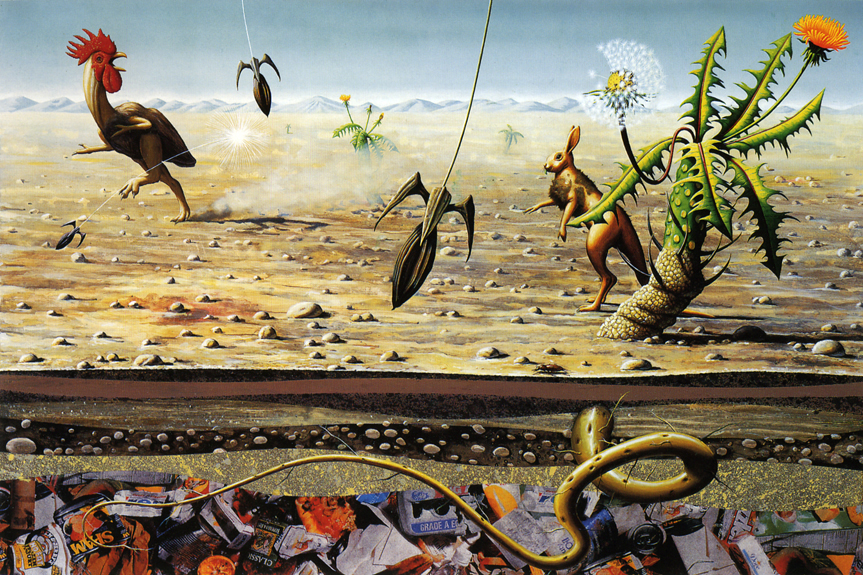Evolution is a continuous process, shaping life on Earth for billions of years. As environmental conditions change, species adapt or go extinct, leading to the emergence of new forms of life. Looking at past evolutionary trends, we can speculate on what kinds of animals might appear in the distant future. Will they be shaped by climate change, human influence, or even technological advancements? This article explores some possible future animals based on evolutionary principles and ecological shifts.
1. Climate-Driven Evolution
Climate change is one of the most significant factors influencing evolution today. Rising temperatures, shifting weather patterns, and changing sea levels could lead to fascinating new adaptations.
- Hyper-Arid Desert Creatures: As deserts expand, animals may evolve extreme water retention abilities. Future mammals might have thick, heat-reflecting scales instead of fur, similar to reptilian adaptations.
- Cold-Resistant Mega-Mammals: If an ice age returns, large, fur-covered herbivores resembling mammoths could evolve to survive the harsh climates.
- Storm-Sensing Avian Species: Birds may develop heightened sensitivity to atmospheric pressure changes, allowing them to avoid extreme weather events by migrating preemptively.
2. Oceanic Evolution and Aquatic Dominance
Rising sea levels and pollution could shift evolutionary advantages to marine species.
- Filter-Feeding Super-Fish: With plastic and pollutants filling the oceans, fish may evolve organic filtering systems to extract nutrients while expelling toxins.
- Amphibious Mammals: Future mammals might develop semi-aquatic adaptations similar to otters or seals, allowing them to navigate both land and water for food and shelter.
- Intelligent Cephalopods: Octopuses and squids, already known for their intelligence, could develop advanced problem-solving skills and even primitive tool use.
3. Human-Influenced Evolution: The Rise of Hybrid Species
Human activity affects wildlife in profound ways, leading to rapid adaptation or even direct genetic manipulation.
- Urban Survivors: Raccoons, rats, and pigeons may develop increased intelligence, stronger immune systems, and even dexterous limbs to better navigate human environments.
- Domesticated Hybrids: Genetic engineering could create entirely new species tailored for specific tasks, such as bio-luminescent pets or miniature livestock for urban farming.
- AI-Assisted Evolution: With advancements in biotechnology, humans might design intelligent, semi-synthetic creatures capable of assisting in tasks such as environmental cleanup.
4. Future Flight and Aerial Adaptations
With open skies offering less competition, aerial evolution could produce extraordinary flying species.
- Giant Avians: With reduced predators and larger food sources, bird species may evolve into enormous, flight-capable creatures reminiscent of prehistoric pterosaurs.
- Balloon-Like Floaters: Some organisms could develop gas-filled bladders, similar to jellyfish, allowing them to drift through the air in search of food.
- Bioelectric Flyers: Inspired by electric eels, some birds or insects may evolve the ability to generate electric pulses for communication or defense.
5. Bioluminescent and Underground Dwellers
As humans alter the landscape, underground evolution could take a surprising turn.
- Cave Colonizers: With increased deforestation and urbanization, some mammals might adapt to underground living, evolving sonar-like senses akin to bats.
- Glowing Predators: Bioluminescence, currently found in some marine species, could become a common adaptation for underground hunters, using light to lure prey.
- Insect Mega-Colonies: Social insects like ants and termites may develop highly complex societies with specialized worker and warrior castes, functioning almost like a single super-organism.
The future of animal evolution is bound to be as diverse and unpredictable as its past. Whether shaped by climate change, human intervention, or natural selection, the creatures of tomorrow could look vastly different from what we know today. While we can only speculate about these potential species, one thing is certain—life will continue to adapt and evolve, no matter the circumstances.

